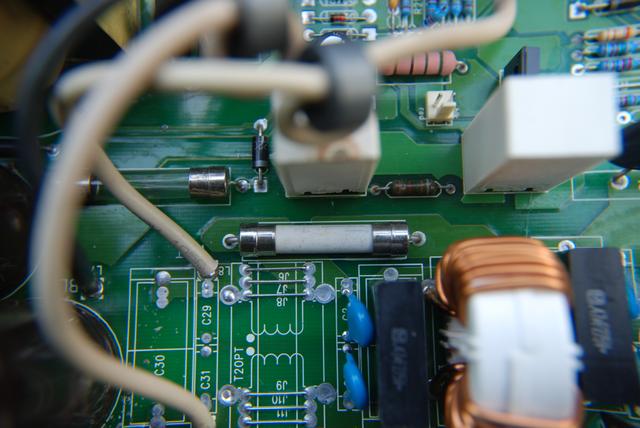Andonso
May 13, 2018Explorer
Progressive Dynamics 9200 series converter repair
Hello,
I have a Progressive Dynamics 9200 series converter PD9280 that stopped putting out any DC voltage.
I think an older battery of three batteries total that kept loosing electrolyte may have damaged the converter. The one battery I found without electrolyte I had filled up again with distilled water seemed to be working, however I didn't check it for a while and my refrig started displaying low DC. Checking the voltage at the PD9280 measured only ~9.5 vdc. So I removed the PD9280 and found it was producing zero voltage.
The battery that was previously low on electrolyte was low again so I removed it and now have only two RV batteries temporarily connected to an Xantrex 10 amp charger which brought the two RV batteries back up to ~12 volts.
I also purchased a 75 watt PM4 Powermax converter that I'm waiting to be delivered.
in the meantime I drilled out the rivets on the PD9280 which has zero DC voltage output and found that the ceramic fuse soldered to the PD9280's board has no continuity.
I'm wondering if the ceramic fuse is bad? or it normally has zero continuity while connected to the PCB?
Possibly there's a more serious problem with the PD9280, however I thought if the only problem is with the ceramic fuse it would be easy enough to solder in a new one if I can determine it's specs and amperage.
I've read about people replacing a 15 amp fuse in a PD9200 series however there are two fuses, a glass fuse which appears to be lower amps such as 1.5 to ~3 amps and a ceramic fuse which I'm uncertain of it's amperage and specs.
There are fast acting and slow ceramic fuses. I'm uncertain which type this one with zero continuity is.
dimensions are approx. 5-6 mm x 34-35 mm

I have a Progressive Dynamics 9200 series converter PD9280 that stopped putting out any DC voltage.
I think an older battery of three batteries total that kept loosing electrolyte may have damaged the converter. The one battery I found without electrolyte I had filled up again with distilled water seemed to be working, however I didn't check it for a while and my refrig started displaying low DC. Checking the voltage at the PD9280 measured only ~9.5 vdc. So I removed the PD9280 and found it was producing zero voltage.
The battery that was previously low on electrolyte was low again so I removed it and now have only two RV batteries temporarily connected to an Xantrex 10 amp charger which brought the two RV batteries back up to ~12 volts.
I also purchased a 75 watt PM4 Powermax converter that I'm waiting to be delivered.
in the meantime I drilled out the rivets on the PD9280 which has zero DC voltage output and found that the ceramic fuse soldered to the PD9280's board has no continuity.
I'm wondering if the ceramic fuse is bad? or it normally has zero continuity while connected to the PCB?
Possibly there's a more serious problem with the PD9280, however I thought if the only problem is with the ceramic fuse it would be easy enough to solder in a new one if I can determine it's specs and amperage.
I've read about people replacing a 15 amp fuse in a PD9200 series however there are two fuses, a glass fuse which appears to be lower amps such as 1.5 to ~3 amps and a ceramic fuse which I'm uncertain of it's amperage and specs.
There are fast acting and slow ceramic fuses. I'm uncertain which type this one with zero continuity is.
dimensions are approx. 5-6 mm x 34-35 mm
